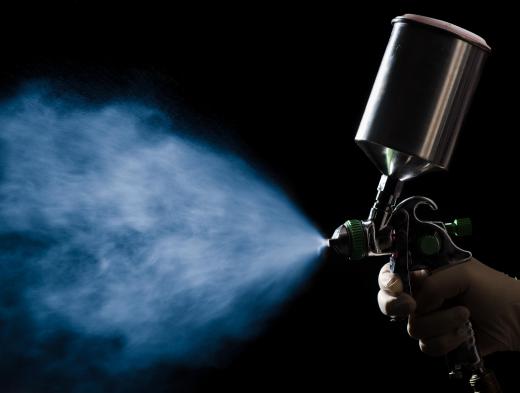Trying to obtain a high gloss finish on a fiberglass product may seem like a hard job. Actually, finishing fiberglass is a task that will take a great deal of effort, but the steps necessary to finish fiberglass are fairly straightforward. Here is a list of materials that will come in handy during any fiberglass finish project and some basic instructions on how to proceed.
In order to finish fiberglass, make sure you have plenty of sandpaper on hand. You will need a range of grits, beginning with a low grit paper and going up to high-level grit wetsanding paper. Sanding fiberglass is a must before you can even think about applying a finish to the surface. The exterior of the fiberglass needs to be perfectly smooth, in order to achieve the look that you want. For best results do not try to sand using your hand alone. Your fingers will naturally apply different layers of pressure while sanding. Using a sand block will apply even pressure and create a smoother surface.

Next, you will need filler putty to take care of any indentations that you cannot remove. You may want to consider doing a preliminary sanding, then lay a coat of the filler putty on the surface. This will help fill in any indentations while you sand down to a smooth surface. Just in case there are any small pits or valleys that are not filled with the filler putty, have some spot putty on hand. Simply apply a small amount with your finger, then sand that putty down to the level of the fiberglass surface.

The next job in the task to finish fiberglass is to apply a coat of primer. It is a good idea to use a thick polyester primer, one that contains some epoxy in the mix. This will ensure that the primer coat adheres properly to the sanded fiberglass. You may also want to consider mixing a small amount of your color coat into the primer as well. Adding the color will make it easier to finish the fiberglass with only one topcoat instead of two.

Finally, to finish fiberglass, you will need your final coat of paint. Using a spray gun will provide a smoother coat than using spray paints in the can. You also will have more control of the angle and distribution of the paint as it goes on the fiberglass. Make sure you stay an equal distance away from the fiberglass as you spray on the paint. Let one coat dry slightly before you begin a second coat. Don’t be discouraged if one coat does not do the job. Chances are that you will need no more than two, if the sanding and filling was done properly.

The final step in any project to finish fiberglass is what is known as the clear coat. This should be applied no more than a day after finishing the painting. Make sure there is not dust or debris on your newly painted fiberglass before beginning to apply the clear coat. Spray on one coat, and then let it dry for a short time. Add at least one more coat. Depending on the brand of clear coat you use, two coats should be enough to wrap complete your project.

Using this method you can finish fiberglass components of all types, from lawn and patio furniture to car fenders. It is a good idea to finish fiberglass pieces using fillers, primers, and paint that are made by the same manufacturer. That way, you can be assured there will be no chemical interaction that could damage the finish internally. Remember that the job to finish fiberglass is one that requires patience and a great deal of time, but the results can be well worth the effort.

